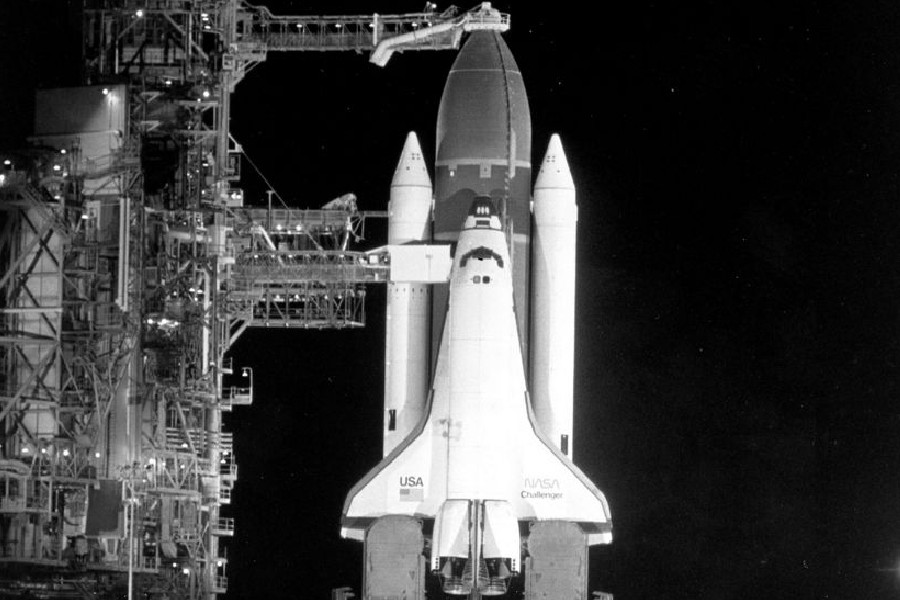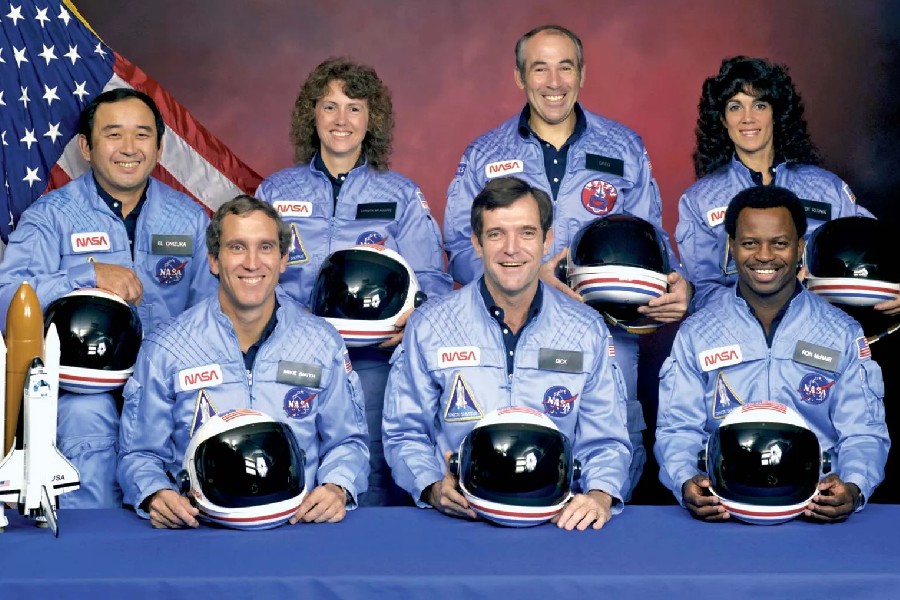The Space Shuttle program represented a new era of reusable spacecraft, beginning operational flights in 1981. For over three decades, these iconic vehicles pushed boundaries while enabling key scientific and engineering achievements.
Yet tragedy would strike the program twice, resulting in the devastating loss of two Space Shuttle orbiters and their crews. Today, many may wonder about the Space Shuttle tragedy. Which Space Shuttle exploded?
This article will recount the background and causes behind both catastrophic Shuttle accidents. By reviewing the technical and organizational factors implicated, we can honor the fallen while better understanding these still-painful episodes in the history of human spaceflight.
Though setbacks, the spirit of discovery has persevered to build on the shuttle’s legacy. As we reflect on its triumphs and tragedies, we affirm the importance of learning from the past while steadily advancing into the future.
Which Space Shuttle Exploded?
So, which Space Shuttle exploded? The Space Shuttle Challenger exploded on January 28, 1986, just 73 seconds after liftoff. The tragic incident resulted in the loss of the spacecraft and its seven-member crew.
The disaster was caused by the failure of an O-ring seal in one of the solid rocket boosters. This failure led to the destruction of the shuttle. It also caused NASA to suspend the Space Shuttle program for over two years while safety improvements were implemented.
Space Shuttle Challenger tragedy
The Space Shuttle Challenger represented a traumatic loss for NASA and the nation. 73 seconds into its January 28, 1986 launch, the orbiter broke apart over the Atlantic Ocean. All seven astronauts aboard perished, including teacher Christa McAuliffe.
Challenger was NASA’s second shuttle to reach space, beginning service in 1983. Its planned mission for STS-51-L was deploying a communications satellite and conducting scientific experiments.
The accident investigation found that cold temperatures compromised a rubber O-ring seal on one of the Shuttle’s solid rocket boosters. This allowed hot gas to escape and damage the external fuel tank, leading to rapid disintegration.
The Challenger tragedy grounded NASA’s shuttle fleet for nearly three years. It called into question the management and safety culture within the agency. The disaster remains a solemn reminder of the inherent risks and sacrifices of space exploration.
Overview of mission STS-51L
The STS-51L mission of Space Shuttle Challenger had several key objectives. The primary goal was deploying a communications satellite called TDRS-B. This was part of a network supporting the Space Shuttle and other low-Earth orbit assets.
STS-51L also contained experiments designed by students, such as the “Comet Halley Active Monitoring Program“. Materials processing, fluid dynamics, and plume studies were other areas being investigated.
Additionally, the mission marked the first teacher in space project flight. Christa McAuliffe was selected from applicants across the country to fly as the first educator astronaut, with plans to conduct lessons from orbit.
The diverse objectives of STS-51L highlighted the Space Shuttle’s capabilities in deploying satellites, enabling research, and expanding access to space. Challenger’s tragic loss prevented these goals from being fulfilled.
Challenger‘s crew
The mission specialists selected represented diverse spaceflight expertise. Ronald McNair was making his second shuttle voyage after record-setting prior experiments. Senior specialist Ellison Onizuka brought essential guidance as the launch neared.
Newcomer Gregory Jarvis managed key satellite operations. Engineer Judith Resnik and educator Christa McAuliffe offered unique capabilities. This accomplished team stood ready to expand frontiers.
Their varied backgrounds coalesced around shared diligence, courage, and vision. Each specialist toiled towards rocketing research, or inspiration itself, into orbit that frigid January dawn. As specialists they specialized in humanity’s ascent.
Final countdown
In the hours before Challenger’s fateful January 28 launch, procedures quickened at Florida’s Kennedy Space Center. Teams performed thorough equipment inspections while fueling operations commenced to feed the shuttle’s mammoth external tank.
As propellant flowed into laboratories that fine morning, excitement likewise surged. Viewing stands filled with dignitaries and guests; millions more tuned radios and televisions nationwide to witness teachers and explorers rocketing towards the cosmos. Fittings were triple-checked that day, dreams triply daring.

Final flight
Climbing skyward
At 11:38 AM on January 28th, twin boosters and engines ignited to lift Challenger. Clearing the tower, the craft arced flawlessly upwards against clear Florida skies bearing humanity’s hopes heavenward. Viewers were awed as the gleaming shuttle accelerated on plumes of smoke and promise.
Inside the cockpit, astonishment gave way to duty as procedures were called out. But just 73 seconds aloft, no more words would be said. A mortal flash erupted that morning, chased by grim contrails raining dreams down.
G-forces rapidly built as Challenger climbed, pressing bodies tight against seats. Crew observations were calm and focused, altitude statuses called out. Professionalism prevailed in those final urgent moments – until calamity suddenly intervened.
Tragedy unfolds
In an instant, Challenger became a calamity witnessed live by onlookers nationwide. As families and officials watched in stunned horror, no parachutes or ejections emerged from the cascade of debris glinting along Florida’s coast.
When fiery remnants etched scars into the seas below, the stomach-churning tragedy struck. Seven souls crafting humanity’s future perished – taken abruptly and gruesomely. Alongside their lost promise, America’s illusion of invincibility was shattered.
That bright morning turned dark not just for grieving families but a wounded nation stunned by televised disaster. As smoke trails dissipated over oceans holding fallen heroes, so too did long-held assumptions about mastery slip from naive hands.
Critical component failure
Even to this day, people are asking what space shuttle blew up so they can honor the sacrifice of the crew that was a part of the mission. But it’s also important to understand what mistakes led to this unfortunate accident.
Fatal seal flaw
Investigations revealed a faulty seal allowed hot gasses to critically damage Challenger’s right booster rocket. Even though there were warnings about these O-ring joints being weak in the cold, NASA faced problems with decision-making due to management issues and cultural factors.
This technical mistake led to a disaster. The compromised booster segments came loose from the fuel tank supports, causing the entire vehicle to break apart, resulting in the tragic loss of the crew just miles above the nation.
Looking back, it’s clear that the rubber seals, weakened by extreme cold and then exposed to rocket flame, weren’t strong enough. This was a case of ambition outweighing caution, with tragic consequences on that January morning.
Agonizing radio silence
After the Challenger broke apart in the sky, Mission Control urgently tried to contact the crew inside the falling cabin, but there was only silence. Communication was suddenly cut off just 72 seconds after liftoff.
Cameras followed the capsule as it fell towards the ocean, and for a moment, there was hope it might survive. But without parachutes, it was clear there would be no miracle. Seven brave astronauts were tragically lost after reaching near space.
During those tense minutes, radar tracked the crew cabin as it headed towards land while anxious teams listened for any sign of communication. But there was nothing, only the painful realization that a proud moment had turned into a heartbreaking descent.
Their lives, our future
In the wake of sorrow, we honor the seven diverse luminaries reaching for the stars that fateful dawn – Dick Scobee, Michael Smith, Judith Resnik, Ellison Onizuka, Ronald McNair, Gregory Jarvis, and Christa McAuliffe.
As pioneers across military service, engineering, science education, and ambition itself, their legacies inspire exploration. Saluting past sacrifice seeds future flight.
Despite the tragic loss of the Challenger crew, their legacy continues to shine brightly in the sky above. Their achievements remain an inspiration, guiding us forward on our journey towards the stars.

Conclusion
As we reflect on the shocking mid-flight destruction of the Space Shuttle Challenger and her crew of seven, several truths endure across the decades. We witness both humankind’s restless drive to explore space and push boundaries, as well as the heartbreaking risks inherent when pioneering the ultimate technological frontier.
Discovering which Space Shuttle exploded helps you realize the heartbreaks and setbacks that marked the journey of space travel evolution. It also helps us appreciate the determination and drive that keeps our astronomers going forward.
While a defective design tragically enabled the fatal explosion of Challenger, an entire country shouldered the resulting wounds and lessons belonging to us all. But from the ashes of fallen dreams, the resolve to carry forward safer, louder and more determined nonetheless persists.
Our desire to explore space shows that neither space itself nor the sacrifice of the Challenger seven will be forgotten by future generations. Now we know forever which shuttle exploded on that agonizing day. May their legacy, sparkling overhead eternally, lift eyes and ambitions skyward once more.
